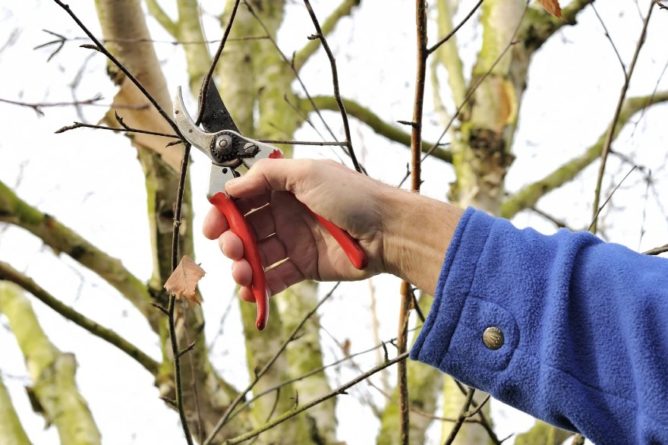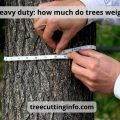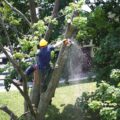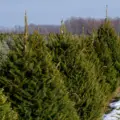If you have a beautiful river birch tree in your backyard, you know that keeping it healthy and beautiful requires some effort. Among the river birch tree maintenance tips, pruning is one of the most essential.
What is tree pruning?
Pruning is a smart way of trimming your trees. When pruning, you cut off all overgrown, diseased, and dead branches. This practice is vital for many reasons, so a caring gardener needs to do it regularly.
When trimming birch trees, you keep them safe and healthy and provide vigorous growth and proper nourishment.
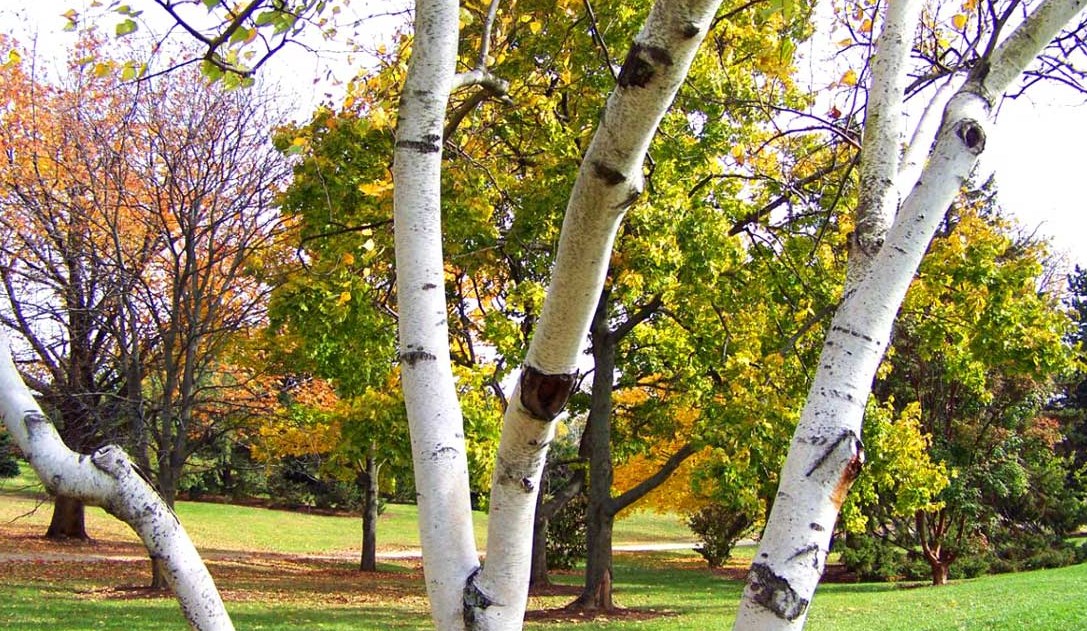
Why should you prune birch trees?
There are several reasons to prune the birch trees and get a bunch of benefits:
#1. Boost birch tree growth
When pruning birch trees, you remove dead branches and let your trees grow faster. Since dead branches compete with healthy ones for food, they reduce the birch tree’s growth rate significantly. As a result, it impacts the overall tree’s development and makes the river birch trees unhealthy.
To promote the birch tree’s growth, get rid of the dead branches. Without extra nutrient wasting, the birch tree will grow more vigorously. Make more space for healthy limbs to grow and produce graceful foliage!
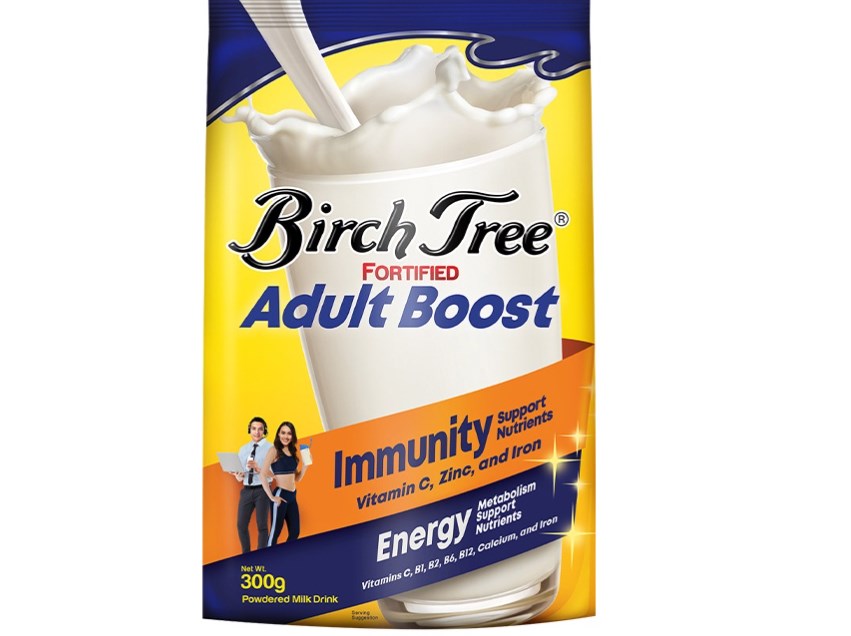
#2. Pest and disease prevention
The dead and diseased branches on your tree can be a breeding ground for fungi, bacteria, tree pests, and other tree issues. Remove these unnecessary limbs, so the pests and diseases can’t spread to the healthy branches and trunk.
#3. Weather safety
Strong weather conditions, such as storms and severe winds, can easily break a birch tree. The overgrown branches increase the risks in this situation. So, trim birch trees and lessen the hazards to your life and property.
#4. Smarten up your backyard
What do you think of a neglected-looking tree with lots of overgrown and dry branches? Is it nice to have lots of fallen leaves scattered everywhere in your yard? So, if you are not pleased with all this, just stop it!
Overgrown branches create a mess in your backyard. To avoid this, remove the excess branches from your birch tree and make your property look smart and neat. Compare your yard scenery before and after you trim birch trees, and feel the difference!
#5. Good use of shade
When overgrowing, some birch branches grow close to the ground. As a result, you can’t settle up in the tree’s shade and have a cool rest. So, why not remove branches that stop you from getting under the tree?
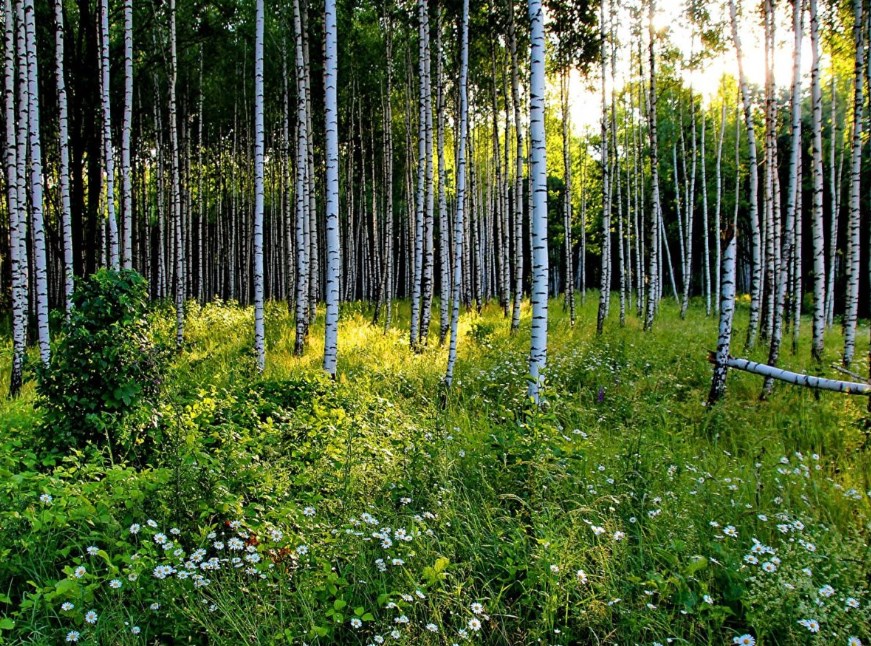
What is the best time to trim a birch tree?
It is not a secret for a caring gardener that you should prune trees at the proper time so as not to damage them. So, when should birch trees be pruned?
Although most trees are best pruned in late winter or early spring, before the dormancy period finishes, this method doesn’t work for the birches. If you prune birch trees in the awakening period, they will leak heavily with a lot of sap.
The ideal time to prune birch trees is from late spring to early autumn. This will help you to avoid both sap loss and pest invasion. Keep in mind that you have a high risk to infect pruning wounds if you prune during the egg-laying season for most insects. Along with making lots of inner damage, these insects can spread serious plant diseases.
Generally, trimming birch trees includes three main factors to follow:
Birch tree age
Correct the pruning schedule up to your birch tree’s age. Since young trees can grow quickly, they can reach an average height of 90 feet. The branches can accordingly spread up to 60 feet. A good rule of thumb is to trim a river birch tree early, which can help you to achieve the desired structure.
Trimming season
As we have already mentioned, you can’t trim birch trees in the late winter months, when they are still dormant. Unlike most trees, they will have a heavy sap loss through the wounds.
For an experienced arborist, it is easy to determine the best time for trimming birch trees. You can start to trim birch in late spring, and any time until the early fall.
One more good rule of thumb is to prune before foliage covers the trees’ structure. The new growth can help you to heal fresh wounds quickly.
Tree diseases
Inspect your river birch tree to check for any tree diseases. If you discover any diseased area, remove it immediately from your river birch tree. Removing the diseased branches and other parts of the tree is essential, as you stop the infections and pests from further spreading.
No matter what season or climate conditions are now, always remove diseased parts of the tree as soon as you notice them.
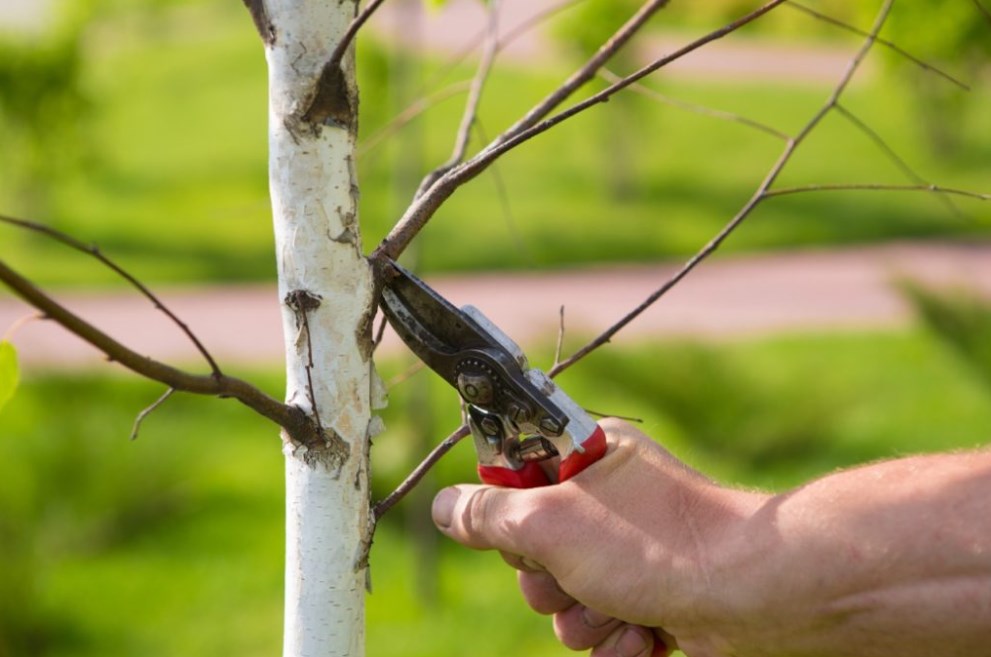
How to prune a river birch tree?
There are five different methods of pruning birch trees. Using any of them, you can be absolutely sure of your tree’s survival and graceful foliage growth after.
A good rule of thumb is to trim as few branches as possible. Generally, you can trim no more than 30% of the whole tree crown.
Here are the best trimming methods for river birches:
#1. The Crown thinning method means removing secondary and weak branches of the birch tree. A crown that is too dense prevents the flow of light to the lower branches. The crown thinning method is the best way to deal with this problem as you can remove the minor branches.
Don’t trim branches of 1st or 2nd order branches from the trunk. Secondary branches are those of 3rd and 4th order, so they are better to remove as excessive ones. That is a zone where weak branches occur more often.
#2. The Crown reduction method works as you trim the birch tree to reduce its height. Remove too-large branches that look overgrown in the tree crown area. Cutting branches that are too large makes your river birch tree look neat and beautiful.
#3. The crown raising method includes the removal of the lower-level tree branches. Thus, you can clear up the crown ground level and provide the birch tree with better light penetration.
In addition, the crown doesn’t have to compete with excess branches for food anymore, as it will get much more nutrients. Crown raising is the best way of pruning trees to boost crown growth.
#4. The crown cleaning method involves the excess branches removal. In this method, you clean the crown up of unnecessary elements (hence the term “crown cleaning”). It is also called light pruning, as you remove dead and weak elements only.
Firstly, you can dispose of the excess (rubbing, broken, or crossing) branches that break up your planned tree’s structure. Misaligned, rubbing, or crossing branches are the odd elements in your design, so you should remove them.
Secondly, you have to cut off dead and diseased branches from the tree. River birches are prone to get infected by pests. Remove diseased branches and stop the infection from spreading further.
#5. The dead branches removal method means only cutting dead branches off. For a healthy birch tree, this step is the most important. When diseased and vulnerable, river birches can’t heal until you help them.
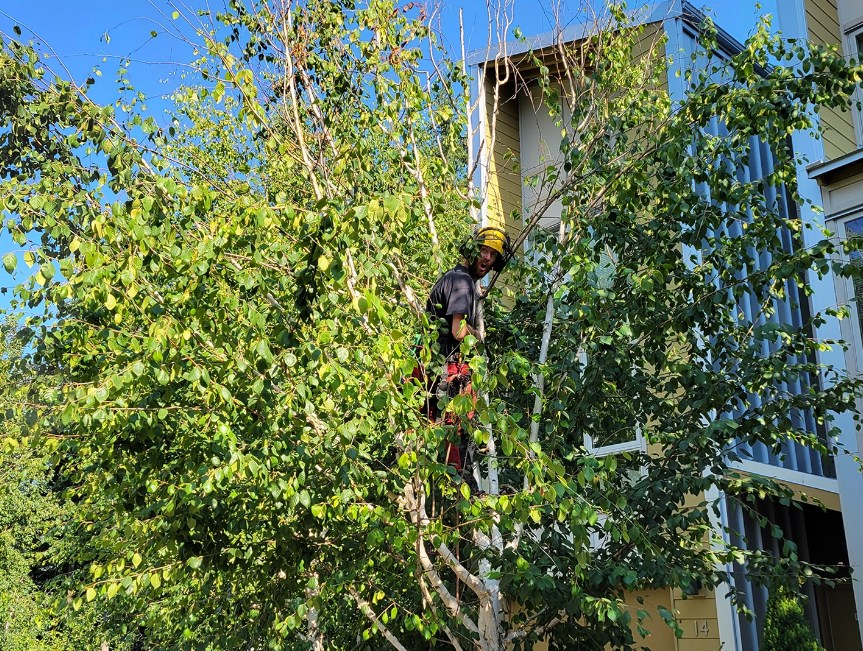
What tools do you need for pruning trees?
To prune birch trees, you require several pruning tools. The exact list depends on your tree’s height and your pruning aims.
- Looping shears work best for larger branches that are from ½ to 2 inches in diameter.
- Hand pruning shears suit better for trimming pruning smaller stems of about ½ inches in diameter and less. These pruning shears are mostly good for light pruning.
- Pruning saws are diverse pruning tools. They can have curved or straight, short or long blades. The thickness and cutting applications also differ a lot. Also, there are electric models, which can be charged with a generator. So, it’s not a problem to find the pruning saws that you require exactly.
- A chainsaw is a great tool for mature birches. They can easily deal with large branches and diseased and dead parts of the tree. You can also get a motorized chainsaw as a super-handy tool.
- Safety gear is generally a pack of units to protect your body from injuries. These include a safety harness, safety helmet, protective gloves, and goggles.
Disinfect all the tools before pruning! There is a high risk to infect birches through dirty pruning shears or saws.
Step-by-step pruning guide
The pruning process requires the proper and smart steps so as not to harm or even kill a healthy birch tree. There are three main steps to follow when pruning birches.
Step 1: Make the undercut.
Take a measuring tape and define 18 inches from the trunk outwards along the branch. Mark, this point to see the cut-off spot. Place a pruning tool under the cut-off spot, and cut the branch in an upward direction. It helps you to prevent any tree damage from the plunging branch.
Step 2: Make the main cut.
Measure the extra 1-2 inches from the undercut to the tree trunk. Mark this new cut-off spot with a notch. Place a pruning tool at this spot and cut away the desired section in an upward direction.
Step 3: Tidy up the cut.
Make the branch collar cut. Remove the branch right back to the branch collar.
Be careful to remove the branch stub just past the branch collar. Leave the collar so that a pruning wound can heal quickly.
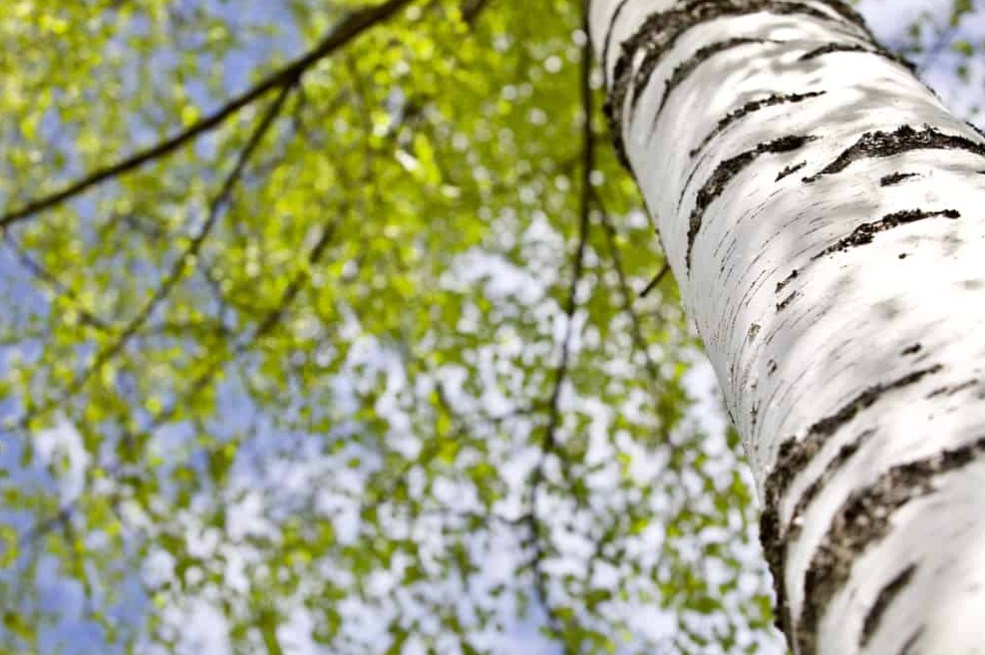
FAQ
Can you trim back birch trees?
Yes, you can. The main point to consider is the desired results. According to your trimming aims, you should select the right pruning technique.
For example, if you want to force branching in young trees, cut the birch back about 2 inches stub above the ground.
In addition, remember about the right angle when cutting. Work at a downward angle to make all the water drain off from the open wound. This method significantly reduces the chances to get fungal diseases and rotting issues for the birch tree.
How do you prune a mature silver birch tree?
The best time to prune silver birch trees is late summer to early fall. Avoid pruning silver birches during winter, as they will lose too much sap through the pruning wounds when wake from winter dormancy.
Can I reduce the height of a birch tree?
The answer is “yes”. Such birch varieties as Silver birch and Himalayan birch are good to cut into smaller structures. This way, you can make them suit your little backyard or any limited landscape.
Final thoughts
You can prune birch trees in several different ways. However, keep in mind that the selected methods have to relate to your pruning aims.
Take proper care of your river birch trees, and they will make your exterior design look amazing!
Read also: How to Correctly Pruning Nectarine Trees: A Simple Guide

